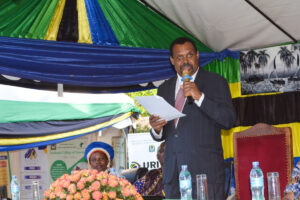
Dar es Salaam. Wakati mwamko wa matumizi ya vyombo vya usafiri vinavyotumia umeme ikiwemo pikipiki na magari ukiongezeka nchini, wadau kwa kushirikiana na Serikali wamekutana kujadili mfumo utakaotoa mwongozo wa uingizaji na utumiaji wa vyombo hivyo.
Uwepo wa mafundi wabobezi, uingizaji wa vyombo hivyo, gharama, taratibu za usajili, utambuzi na uelewa ni miongoni mwa yaliyojadiliwa katika warsha hiyo.
Warsha hiyo ya maendeleo ya mfumo wa kitaifa wa kuhamia matumizi ya umeme (e-mobility) imefanyika leo Desemba 17, 2024 jijini Dar es Salaam.
Imeelezwa moja ya faida ya matumizi ya vifaa mwendo vinavyotumia umeme ni pamoja na kutochafua mazingira, gharama ndogo za kuchajisha na kupunguza hewa ukaa na hewa joto.
Miongoni mwa vigingi vinavyoikabili sekta hiyo hapa nchini ni uhaba wa wataalamu, kodi kubwa na changamoto za kisera.
Kwa mujibu wa ripoti ya E-Mobility Alliance iliyotolewa Machi 2023, Tanzania ina vyombo vya moto vinavyotumia umeme 5,000 idadi ambayo ni ndogo kutokana na uelekeo wa dunia katika matumizi ya nishati safi, lakini ni kubwa kwa nchi za Afrika Mashariki.
Pengine idadi ya vyombo hivyo ingekuwa zaidi ya hiyo, lakini ripoti hiyo inaeleza uwepo wa changamoto hizo kama kodi kubwa katika bidhaa hizo, uelewa mdogo wa jamii, umbali wa huduma za umeme na kutokuwepo kwa sera za wazi.
Akizungumza na Mwananchi Digital kwenye warsha hiyo, Meneja wa Ubunifu na Teknolojia kutoka Tume ya Sayansi na Teknolojia (Costech), Dk Gerald Kafuku amesema kwa sasa muundo wa kisera unatengenezwa na utaunganishwa kisha utapelekwa wizara za fedha na uchukuzi kwa ajili ya kuingizwa kwenye mwaka ujao wa fedha 2024/25.
“Ziingizwe kwenye sheria ya kodi ili kuwe na mazingira wezeshi yatakayofahamika kitaifa kwa ajili ya kutumika kusajili vyombo hivyo na hata miundombinu ya kuchajia. Tunafikiria hata watu wenye vituo vya mafuta wawe na sehemu za kuchajia hivyo inabidi waelewe ndio maana tumekutana ili kujadili,” amesema Dk Kafuku.
“Wenzetu Taasisi ya Nishati Jadidifu ya Elico Foundation tuliokutana nao hii leo wanaandaa muundo wa kisera kwa upande wa pikipiki za matairi mawili na matatu, halafu kama Taifa tunaandaa muundo wa kisera wa ujumla kwa vyombo vyote,” amebainisha.
Mkurugenzi Mtendaji wa Elico, Sisty Basil amesema wameamua kushirikiana na Serikali kuanzia kujifunza kwa nchi zilizoendelea kwenye uendeshaji wa vyombo hivyo.
Amesema waliamua kwenda na Serikali kujifunza kwa nchi zilizoendelea kama China juu ya changamoto, vituo vya kuchajia, sehemu za kubadilishia betri ili kupata ujuzi zaidi.
“Baada ya kujifunza tukagundua tuwe na sera moja ya kushusha bei ya uingizaji, kuwa na vyuo vitakavyozalisha mafundi pale tutakapokuwa na magari, hivyo tumeamua kukutana kujadiliana tuliyoyaona huko na mapendekezo yetu kwenye rasimu ya sera ikiwemo kutatua changamoto,” amesema.
Amesema Tanzania bado haina sera inayosimamia magari ya umeme hivyo mawasilisho hayo yataenda kwenye mapendekezo ya sera ya Tanzania ya magari ya umeme, kisha kwenda bungeni na baadaye kuwa sheria.
Mkuu wa idara ya umeme wa Chuo cha Ufundi Arusha, Mhandisi Ally Ngulugulu amesema kupatikana na teknolojia hiyo mpya ya E-Mobility wamejiandaa kuhuisha mitaala kwa ajili ya kuzalisha wataalamu watakaoendana na teknolojia hiyo ya kisasa.
Ofisa usafiri wa Wizara ya Uchukuzi Idara ya huduma za uchukuzi, Mario Kazimoto amesema suala la vyombo vya usafiri vya umeme, linapaswa kuungwa mkono kutokana na kuwa na faida kemkem ikiwemo kutokuwa na kelele.
Amesema hata Serikali inaunga mkono akitolea mfano kuanza kwa treni ya umeme ya (SGR).
Source: mwananchi.co.tz












